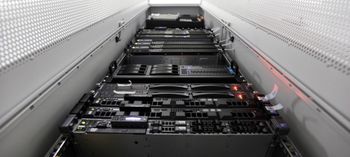In any field, whatever your expertise level is, it’s a good idea to stop by in order to study the state of the art of your profession. Our favourite way to achieve that is to read books considered as references. But in the CG industry, the good readings are rare. Fortunately, when we decided to look for a good book, after a few searches, we noticed that one was standing over all others: Production Pipeline Fundamentals for Film and Games.
It’s a book written by Renée Dunlop who acted for 20 years as an editor, technical writer and journalist in the CG industry. She shares with us what she learned about pipelines by observing the major actors of a production. To illustrate this and have different point of views, the book is completed by interviews of experienced people who worked on a CG or game pipeline.
NB: in this blog post we will focus only on film pipelines.
Production
CG Productions have a deterministic canvas but the content varies a lot and they involve a lot of creative work. That’s why they require a particular approach and a lot of flexibility.
So, to Renée, transparency and clear communication are key elements of a CG production success. In a first place, she explains the main stages of a production. Then she goes into the details by describing each steps from concept to compositing, she describes everything. She considers that everything should be documented to improve communication between stackholders. Then she tackles all the things management should handle: budget forecast, hiring calendar, hardware requirements and service provider booking.
Then Renée describes how validation are processed: where it happens, how you should compare shots, how to do proper note tracking, how to review delivery, and how to ship the final delivery by handling colorimetry and managing sound synchronisation.
Pipeline
This is the main subject of the book. It emphasizes the need of a proper compartmentalization of the fabrication steps. For that Renée encourages you to document properly what is required and created at each step of the production. It will make the life much easier for your software team when implementing tools that manage automatically the transition between steps.
But, automating non-artistic steps face a difficulty: file management. Dealing with a lot of big files, leads quickly to a mess. Which is why, she explores solutions for your folder structure, file naming and metadata storage. Through an in-depth comparison, she discussed the pros and cons of version control versus (file versioning on the disk) vs source control (central repository for versions, the file system is not accessible directly).
Renée will introduce you too to the best practices in management of software projects. CG studios are not always familiar with it. So her insights can be very helpful. She notably compared waterfall and agile methodologies.
Finally she encourages you to adapt your pipeline to your context. to understand the values of the company, the type of production built and what is expected from the people involved.
Hardware
The book describes the impact of the tooling on the hardware. All the computing, working files and outputs require tremendous storage, CPU capabilities and network bandwidth. She proposes strategies to deal with that complexity based on configuration management, cloud rendering, caching of most accessed files and smart backuping.
The Future
The last chapter is dedicated to upcoming trends. It gives you hints about what to follow like virtual machines based workstations, collaborative modeling through WebGL and file standardization via open formats. It’s great source of ideas for your Research and Development team.
Production Pipeline Fundamentals is a must read for anyone new coming into the CG industry. It covers all the main aspects mandatory of a CG pipeline. Chapters are accurate and complete and the interviews added all along the way will give you different perspectives.
For professionals with years of experience, it’s still a very good reading. You can find new ideas, learn how it is done in video game industry and see how big studios deal with the complexity of a CG pipeline.
To sum up: Production Pipeline Fundamentals is highly recommended!
This blog is dedicated to CG pipeline and production management. If you are interested in this book, you will probably enjoy our articles. Read our first blog post to understand who we are and what we do.






